- Administrator
- Albums and Singles
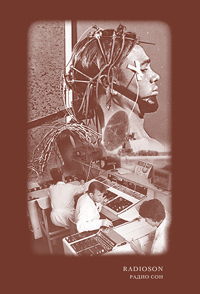 The moniker and title of this debut album from the enigmatic Russian artist translates to "radio sleep", the codename given to a secret USSR project during the Cold War. Much like similar experiments in the USA, it was an attempt by scientists to use radio waves and sound to control and subjugate the masses. Even though I had no idea about any of this for my first listen to this tape (the text describing the background is in Russian, with a URL for an English translation), I got a distinctly sinister feeling just based on the sound: a mix of dissonant textures and subtle, hypnotic melodies that lurk just beneath the surface, making for a multifaceted release that slowly reveals its brilliant secrets.
The moniker and title of this debut album from the enigmatic Russian artist translates to "radio sleep", the codename given to a secret USSR project during the Cold War. Much like similar experiments in the USA, it was an attempt by scientists to use radio waves and sound to control and subjugate the masses. Even though I had no idea about any of this for my first listen to this tape (the text describing the background is in Russian, with a URL for an English translation), I got a distinctly sinister feeling just based on the sound: a mix of dissonant textures and subtle, hypnotic melodies that lurk just beneath the surface, making for a multifaceted release that slowly reveals its brilliant secrets.
Each side of this tape is split into two discernible, but untitled pieces.The first half of the A side begins with a brittle expanse of synthesizer.There is a cold, gray and depressive sound to it, conjuring images of a post apocalyptic wasteland of decaying concrete via its harsh, reverberated ambience.Hints of human voice and static crackle across the mix, isolated and lost.Throughout this darkness and dissonance, a simple melody is blended in.While no doubt intentional, the melody has almost the tone and colors of an alert sound that somehow became musical.
The echoing chaos that ends the first piece sets up the second nicely.Leading off with what best resembles a decrepit, decaying church organ sound, the melodic sound from before reappears, more diverse and varied in its structure, but not as clean and less distinct amongst the noise.Compared to what preceded it, the sound is a bit more static, but the musical part of the piece is more prominent, even if it concludes on a more dissonant, barren note.
On the B side, Radioson crafts a massive expanse of static and hushed, droning tones that are transformed into gliding melodies.The wall of static and noise stays sustained, with a subtle bit of flanging and effects, eventually overtaking the melody, which reappears in a ghostly form at the piece's conclusion.The second part features a heavy bit of raw, distorted synthesizer, mixed with open space and at first a bit more breathing room.Eventually with the introduction of shortwave radio recordings, number reading and alert beacons, it concludes the tape on an unsettling, tense note.
Radioson has brilliantly created an ambience of Cold War era psychological weaponry via raw electronics and unconventional melodies.Captivating from start to finish, there is a sense of malignancy that is pervasive throughout.The cleaner sounds may convey a sense of normalcy and familiarity, but as a whole the work is disconcerting and enigmatic in the best possible ways.
samples:
 
Read More
- Administrator
- Albums and Singles
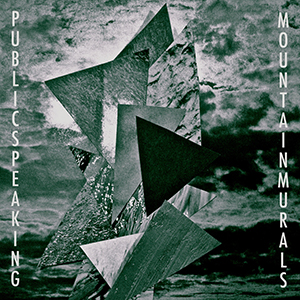 Unlike some of Jason Anthony Harris' previous work as Public Speaking, Mountainmurals is a conscious attempt at specifically creating a "noise" release. Using only a variety of household objects as sound sources (none of which are obvious), the 11 untitled pieces, or at least discernible segments result in a gamut of sounds, some very different but all exceptionally well executed.
Unlike some of Jason Anthony Harris' previous work as Public Speaking, Mountainmurals is a conscious attempt at specifically creating a "noise" release. Using only a variety of household objects as sound sources (none of which are obvious), the 11 untitled pieces, or at least discernible segments result in a gamut of sounds, some very different but all exceptionally well executed.
Whatever instrumentation Harris used to make this tape, a recurring theme on the first half is huge, overdriven percussion that almost resembles a gigantic oil drum.The second piece it makes for the primary sound:all big booming noises run through delays and effects to give it a plethora diversity, but never obscuring the original sound.On the fifth composition, the bassy rumbles are paired with thin, skittering noises that have a semblance of structure, but as a whole it is mostly chaotic and messy.
The metallic, junky sound pops up in the first piece too, cut into what sounds like loops and crunchy distortion.An almost melodic bit of what could be guitar (but likely is not) is weaved in and out, giving a swirling atmosphere to an otherwise lurching outburst of noise.The fourth piece mostly has Harris going balls out noise via that genre prominent but always fun feeling of overdriven crunch.Some sort of musical bit is there, but it sounds like the accidental recording of a far off radio playing as a bulldozer crushes through a field of rocks.
The other side of the tape sees Harris staying closer to a traditional noise sound.The penultimate composition especially has him conjuring a huge blast of dissonance.With all of the distortion and overdrive, the sound resembles that of the best Harsh Noise Wall artists.The sixth piece too is largely cacophonous, but not as oppressive or overwhelming.Thin and brittle static and wet reverb result in a spacy, cosmic bit of noise.The following piece as well is erratic and dissonant, being a cut up pastiche of random sounds, but never too aggressive or forceful.
The two piece combination of the eighth and ninth pieces have a different sense entirely, and one that is distinctly dark.The former is all wet noises and what sounds like menacing bowed instruments.Those swells of ugly noise and what resembles far off conversations makes for a decidedly organic, and disturbing bit of sound.The latter is based on what mostly sounds like forward and backward breathing sounds, but inhuman and uncomfortable.Concluding on bass heavy, noise heavy pseudo-melodies, it has a great creepy vibe to it.
Mountainmurals is a far cry from the weirdly idiosyncratic, song oriented pop of Blanton Ravine, my last experience with Jason Anthony Harris' music.This tape is nowhere near as musical as that album, but still bears his mark of unconventional instrumentation and structures.Of course curiosity had me wondering throughout what exactly was used to make these strange sounds, but the ambiguity made these compositions all the more engaging.
samples:
 
Read More
- Administrator
- Albums and Singles
Forseen years ago by the inclusion of a secret extra pocket in the Far West packaging; Master Musicians have created and brought fourth a painstakingly crafted complimentary LP for synced playback with their 2013 release Far West. With 2 turntables or other playback devices you can playback a fully unique quad experience. Further West shows off deeper journeys into the cave where we can dissolve ourselves.
Further West also stands alone as an inverted yugified universe from the Far West cannon. Liquid synth journeys into the void. We invite you to enjoy it either way.
More information can be found here.

Read More
- Administrator
- Albums and Singles
September 2015 marks the release of Stephen O’Malley’s Eternelle Idole (SP060), long-awaited documentation of the score of Paris-based choreographer Gisèle Vienne's eponymous artistic ice skating choreographic piece of the same name.
Composed of 47 minutes of music spread over 2 vinyls and enhanced by a elegant and chilling photoset by Estelle Hanania, the record features some - familiar - O’Malley collaborators such as Steve Moore, Daniel O'Sullivan, Peter Rehberg, Jesse Sykes, Bill Herzog & Randall Dunn.
Recorded between Brest (FR), Seattle (USA), and Rotterdam (NL), the score sees Stephen O’Malley taking several creative detours, utilizing modular synthesizers and programming as key elements for much of the composition. And while a 3 minutes hole will extract the music from any temporality, emerging eerie phrases of keyboards and piano draw a white monochrome stage for a young girl’s stark and emotive elegy.
Not to worry then… clavichord and guitars weave the darkness, supported by Jesse Sykes prophetical voice, summoning the utter walls of the threats from the external world.
Mirroring the music score, Estelle Hanania presents 16 photographs from the choreographic piece, enlightening how much ice-skating can be about grace and sustain, geometry, telemetry, distance and perfection, as well as possible falls, gloomy shadows.
Metal against ice, tights and knots, spirals and scratches, shouts and winds : field recordings mold a crispy atmosphere while instruments draws some ovals shapes such as lakes, ice skating ring, cosmos belt… and a terrestrial cloud passage and eventual landing platform for a flying saucer.
More information can be found here.

Read More
- Administrator
- Albums and Singles
“In our 20+ years of writing songs, I’ve learned that no matter how escapist, divergent, or even transcendent the creative process feels, the result is more beholden to what is going on at the moment. It’s hard to admit that one is so influenced by what is in front of us. Doesn’t it come from something magical and far away? No, it comes from here. It comes from now. I’m not going to tell you what this record is about because I have too much respect for that moment when you come to know it for yourself.”
— Alan Sparhawk, Low
Co-produced by Low and engineer BJ Burton at Justin Vernon’s April Base Studios in Eau Claire, WI, Ones and Sixes is the new (and, so far, the best) album from the Duluth-based trio of Alan Sparhawk, Mimi Parker and Steve Garrington.
More information can be found here.

Read More
- Administrator
- Albums and Singles
***
He strode towards a long drink.
Running in the gutter,
scanning patterns.
Skin staring, stirring unbelief.
Scarred metal faces
on the iron streets,
spitting blood.
***
Samples and similarly cryptic information can be found here.

Read More
- Administrator
- Albums and Singles

Read More
- Administrator
- Albums and Singles
When I was a child, I spoke to Helen.
Helen is a pop group from Oregon. Liz Harris (vocals/lead guitar), Jed Bindeman (drums/tambourine), Scott Simmons (bass/guitar), and Helen (back up vocals). Originally started with the intention of being a thrash band, it turned into something else entirely. The Original Faces was recorded over a period of several years in Portland by the band members, their friends Nick, Chris and, largely, Justin Higgins. Written together, some songs based on Liz and Scott's demos.
The song "Violet" can be heard here.
More information can be found here.

Read More
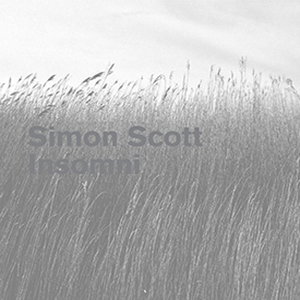
Although probably doomed to be primarily known forever as "the drummer from Slowdive," Simon Scott has had quite an impressive, varied, and somewhat inscrutable solo career, releasing some fine albums on labels like Miasmah and 12k and dipping his toes into a whole host of underground subgenres.  With his latest release, he continues to alternately dazzle and perplex me–even more so than usual, actually.  Curiously (and misguidedly?) presented as a single 42-minute track, Insomni feels more like multi-artist mixtape than a coherent longform composition.  Naturally, some of the passages are quite beautiful, but the overall presentation left me scratching my head quite a bit.
- Administrator
- Albums and Singles
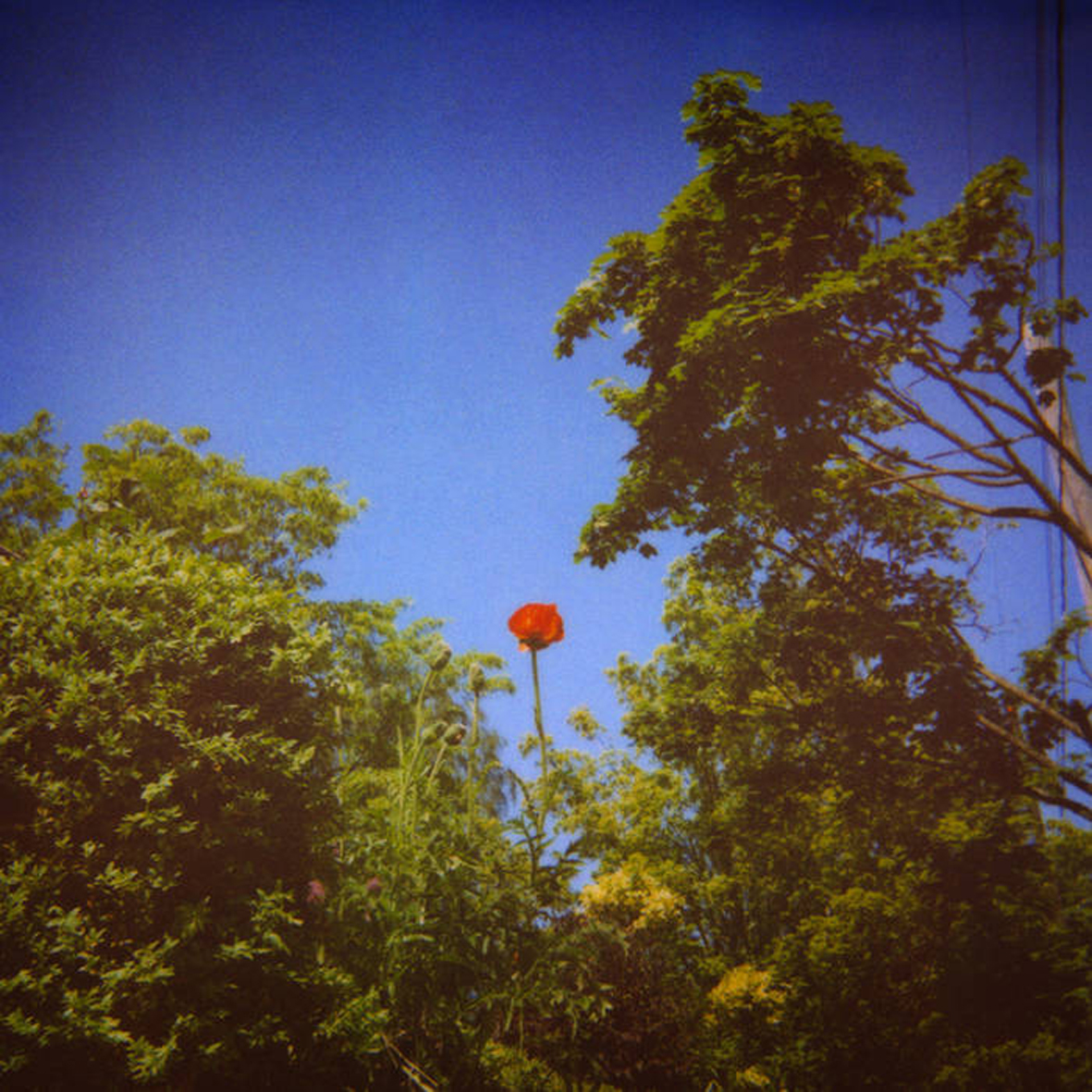 To my great shame, I slept on this excellent album for entirely too long, as Thomas Meluch’s mannered songwriting has never quite connected with me despite my appreciation for his hushed, bleary, and languorous aesthetic.  With Sonnet, however, he largely dispenses with vocals in favor of a suite of warm, lush ambient drone, which is (predictably) far more to my taste. That said, I would definitely hail this as a stellar album even without the benefit of my unfairly subjective stylistic predispositions, as it is an archetypal Great Kranky Album, consistently hitting the same woozy, blissed-out sweet spot as other label luminaries like Windy & Carl.  As if that were not enough, the end of the album shows hints of something even better (and far more distinctive).  This may very well be Benoit Pioulard's masterpiece.
To my great shame, I slept on this excellent album for entirely too long, as Thomas Meluch’s mannered songwriting has never quite connected with me despite my appreciation for his hushed, bleary, and languorous aesthetic.  With Sonnet, however, he largely dispenses with vocals in favor of a suite of warm, lush ambient drone, which is (predictably) far more to my taste. That said, I would definitely hail this as a stellar album even without the benefit of my unfairly subjective stylistic predispositions, as it is an archetypal Great Kranky Album, consistently hitting the same woozy, blissed-out sweet spot as other label luminaries like Windy & Carl.  As if that were not enough, the end of the album shows hints of something even better (and far more distinctive).  This may very well be Benoit Pioulard's masterpiece.
As far as album origin stories go, Sonnet is a fairly unusual case, as it is partially rooted in field recordings that Meluch made in 2013 of air conditioners, birds, insects, and washing machines.  Rather than just using the recordings themselves as background texture, Thomas attempted to recreate their timbres and harmonies on his guitar and chopped them into loops.  That is already an appealingly left-field move, but he then went one step further and also recreated the ambient sounds that he experienced in a series of dreams.  If Sonnet were not such a wonderful album, such a backstory would probably make me cringe, but it proves to be quite elucidating here.  These pieces are mesmerizing precisely because they do not follow any sort of expected or traditional compositional patterns, instead emulating non-musical sources and adhering to a hazy sort of dream logic.  In a more specific sense, that means that most of Sonnet’s 14 pieces drift along in a warmly rippling and hissing fever dream, achieving a blurred and veiled beauty without ever cohering into concrete structures or melodies.  To his credit, Thomas completely avoids all the inherent pitfalls of this vein by avoiding toothless oceanic bliss through a variety of sharp, distressed, and treble-heavy textures. Sonnet certainly feels like a dream, but it is an uneasy one experienced through blown-out speakers and a malfunctioning tape deck.
The overall effect is still quite a comforting (albeit disorienting) one and Meluch’s rare divergences only deepen the spell rather than break it.  For example, "A Shade of Celadon" is an actual song with vocals and lyrics, but it feels disconnected, slowed-down, and concealed beneath a thick veil of hiss.  Also, the whole thing completely dissipates into a disjointed clattering of cymbals after only a couple minutes.  The warbling "As Would the Weaver," on the other hand, resembles a pitch-shifted loop of a coyote fed through a chorus pedal.  The best pieces, however, simply take the album's normally bleary and cracked aesthetic and organically build it to poignant, dreamy crescendos.  In "Upon The Break Arch," Meluch combines an undulating bed of drone and a twinkling melody and gradually snowballs towards a bittersweetly pulsing and wounded-sounding catharsis.  "Shut-ins on Sundays See" is another highlight, as a glacially unfolding flow of chord swells increasingly gives way to a melancholy melody and host of echoing pops and clicks.  The true centerpiece of the album, however, is "The Very Edge of Its Flame," which can best be described as "like being inside a snowglobe on heroin": endless rippling and hissing warmth and an alternately ascending and descending music box melody that leaves a trail of heavenly afterimages.  It is an absolutely glorious piece (and thankfully a long one as well).
The most amazing quality of Sonnet, however, is how weirdly natural it all sounds.  The best pieces do not sound at all deliberate or composed–they feel like they just kind of happened, as if Meluch had just released field recordings of his dreams without any editing.  That is an incredibly hard illusion to pull off (or quite an astonishing technical feat if that is actually what he did).  The closest that I can come to a valid critique is this: most of the album is merely very good–it does not become truly great until somewhere around the tenth song.  That is probably just the result of intelligent sequencing though.  While it may have taken a while for Sonnet to completely grab my attention, it still did lure me in...and then it blossomed into an utterly sublime and achingly beautiful final act.  I would not have changed anything.  Sonnet is a surprise contender for one of my favorite albums of the year.
 
 
Read More
- Administrator
- Albums and Singles
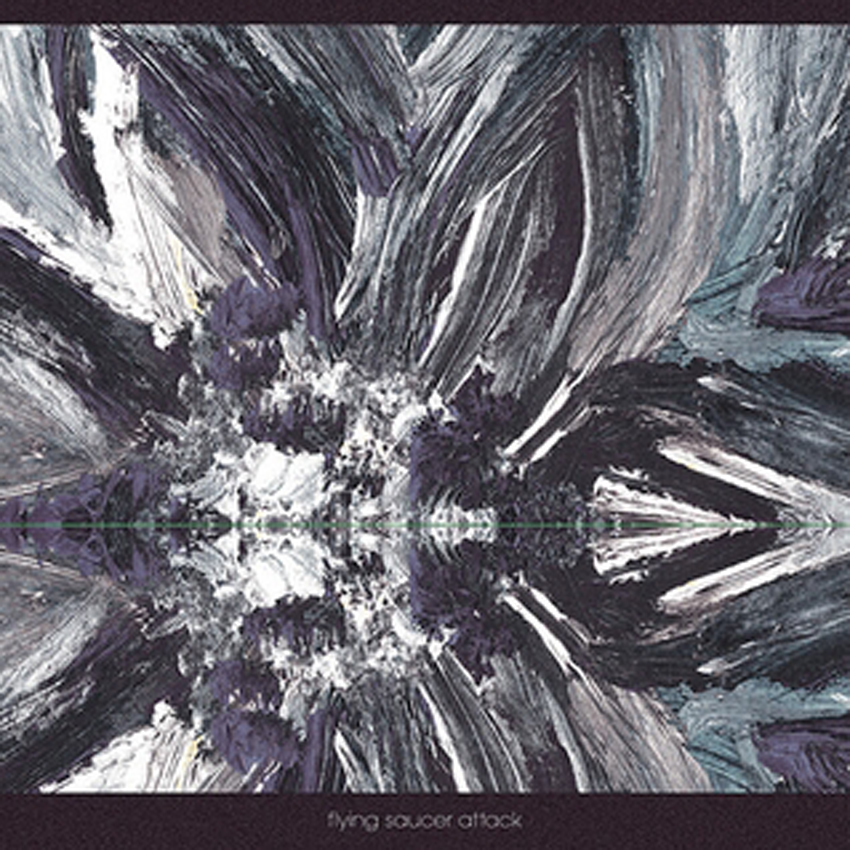
After roughly a fifteen year hiatus, cult shoegaze/basement psychedelia visionary David Pearce has resurrected the Flying Saucer Attacker moniker, albeit in somewhat diluted form. Instrumentals 2015 is certainly sketchlike and devoid of vocals, but it still boasts Pearce's wonderfully smeared, fractured, floating, and tape-hiss-enhanced aesthetic, which is exactly what I was hoping for.  While some actual songs or a fully formed new album would certainly have been even better, late-period FSA was already quite abstract.  Also, I never looked to Pearce for great vocal melodies, tight songcraft, or killer hooks.  His talents lie elsewhere.  Everything that matter is here: this may not a complete return to form, but it nevertheless feels like the welcome return of an old friend who has not changed at all.
This is a both an enigmatic and weirdly mesmerizing album for a whole host of reasons, compiling 15 untitled and undated pieces into an unexpectedly satisfying and well-sequenced whole.  Nearly all of the pieces seem like one-take guitar improvisations, which makes Instrumentals seem like it could have easily been composed and recorded in just a day or two, especially since several pieces clock in at a minute or less.  Given their variety, however, that seems highly unlikely–this feels more like an enticingly incomplete record of Pearce’s intermittent experiments and evolutions over the course of his long silence, ranging from eerie, otherworldly glow ("Instrumental 1") to howling, gnarled guitar squall ("Instrumental 6") to a blurred and druggy twist on Sir Richard Bishop-style Eastern modality ("Instrumental 3").  Then there is "Instrumental 4," which sounds like a glassy and hazily warped church organ.  Most of the longer pieces, however, stick much closer to the expected FSA aesthetic.  Despite that, everything feels like it belongs here and it all flows beautifully.  I suspect that Pearce just culled some highlights from a vast backlog of tape, then painstakingly worked his hissing and hazy production magic to weave a kaleidoscopic and hallucinatory abstract narrative.  It is amusing to hypothesize that this album took 15 years to compose though, with David churning out just one song per year, some amounting to little more than 40 seconds of flute-like hum.
Given Pearce's masterful production and sequencing, Instrumentals works best as a whole, drifting along seamlessly as a single extended, dreamy, crackling, and druggy reverie.  That said, however, there are a number of substantial individual pieces strewn throughout the album that stand out amidst the ocean of echoey washes and warm swells.  "Instrumental 7," for example, is a beautifully fragile, quivering, and trebly shimmer of watery sustained piano tones.  Another highlight is "Instrumental 9," which builds to a lovely crescendo of reverberating backwards chord swells.  "Instrumental 10" and "Instrumental 14," on the other hand, nicely incorporate field recordings to evoke nocturnal fields of crickets and burbling waterfalls.  The album's lengthy final piece, however, does not deviate from the rest of the album or dispense with quirks so much as distill all Instrumental's best bits into one heavenly and elegantly warped guitar improvisation, as multiple tracks bleed and smear together into twinkling, narcotized bliss for nearly ten minutes.
While I suppose it is possible to be disappointed in what Instrumentals is not (a legitimate new FSA album), it is nearly impossible to find any flaws with what it is: a perfectly crafted, hypnotic, and distinctive collection of unheard work by an artist who has been quiet for far too long.  I DO kind of miss the vocals as an added layer though–regardless of their melodic merits, Pearce often had a wonderful way of separating them into a weirdly detached and floating layer that greatly heightened FSA’s unreality.  Allowing for its intentionally modest ambitions and limited palette, however, it is hard to imagine any way in which Instrumentals 2015 could be any better than it is.  This may be a minor album, but it is also an extremely good one.
 
Read More

